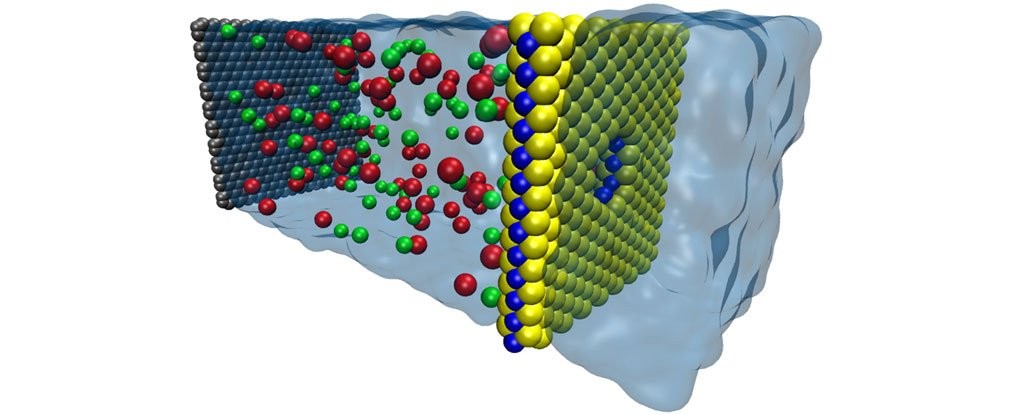Most humans live near oceans. Yet even in coastal communities, there are often severe water shortages. Hence, desalinization of seawater into fresh water is the “holy grail” of unlimited water supply. Yet, present desalination processes require tremendous amounts of energy, making such processes very expensive.
Nanotechnology has been proposed many times as the means to reduce such energy costs. Many such proposals have not gone far, but one gets the impression that sooner or later, someone will figure out how to do it. The latest such proposal comes out of the University of Illinois.
Nanotechnology involves molecular-sized structures that have special properties. Nanotechnology desalinization filters have holes called ‘nanopores’ that allow pure water to flow while blocking salt and other contaminants.
The UI team uses a nanometre-thick sheet of molybdenum disulphide (MoS2) riddled with these nanopore holes, and claims they can filter up to 70 percent more water than graphene.
Conventional desalination relies on reverse osmosis to channel seawater through a thin plastic membrane, where a solution such as sugared water pulls water across the filter. Unfortunately, “while the membrane appears thin to the eye, from a microscopic perspective it’s more tube- or tunnel-like than a sheet that’s only a nanometre in thickness”, requires considerable pressure (and energy). In contrast, the extreme thinness of the molybdenum disulphide membrane allows water to pass through with much less resistance, thus requiring less energy.
Further, “MoS2 has inherent advantages in that the molybdenum in the centre attracts water, then the sulphur on the other side pushes it away, so we have much higher rate of water going through the pore,” said Mohammad Heiranian, first author of the study. “It’s inherent in the chemistry of MoS2 and the geometry of the pore, so we don’t have to functionalise the pore, which is a very complex process with graphene.”
Editor comment: although many nanotechnology materials look promising, manufacturing them in scale can be prohibitively expensive. Whoever can figure out how to overcome this barrier can have a tremendous impact.
Sources:
Nature Communications, 6, Article number: 8616, 14 October 2015.
Science Alert, 12 November 2015.


Lets not say this would give us unlimited water. It is a finite resource.
Also this technology is currently science projection